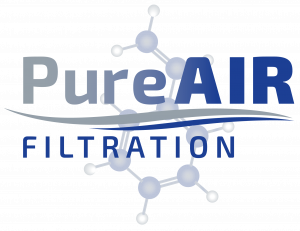U.S. Biogas Growth Brings New Opportunities and Challenges
The American Biogas Council recently announced that 2024 marked a record-breaking year for the U.S. biogas industry. More than $3 billion was invested into 125 new biogas projects, a 40% increase in investment compared to 2023 with a 17% increase in the number of new projects launched. As the U.S. continues to embrace renewable energy solutions, biogas is proving to be a vital player in our clean energy future.
What is Biogas and How is it Produced?
Biogas is a renewable energy source produced through the breakdown of organic material such as food waste, manure, landfill gas, and wastewater sludge. It is composed mainly of methane (CH4) and carbon dioxide (CO2), but it also contains impurities—including hydrogen sulfide (H2S), one of the most challenging contaminants to manage.
Biogas can be used for power generation, pipeline injection, and as a transportation fuel, making it a sustainable alternative to traditional fossil fuels. Its growth directly supports waste diversion goals, renewable energy mandates, and efforts to decarbonize the energy grid.
Biogas is Booming in the U.S.
The recent surge in biogas projects is driven by clean energy incentives, the increasing demand for renewable natural gas (RNG), and sustainability goals set by industries and municipalities. Agriculture, landfills, and wastewater treatment plants are major contributors to this growth, creating significant opportunities—and operational challenges.
As biogas scales up, gas cleanup and impurity management become even more critical, particularly when it comes to the removal of hydrogen sulfide.
The Challenge of Hydrogen Sulfide in Biogas
Hydrogen sulfide (H2S) is one of the most corrosive and hazardous components found in biogas streams. Even at low concentrations, it poses serious risks:
- Human health hazard: Toxic even at relatively low levels.
- Odor nuisance: Rotten egg smell detectable at extremely low concentrations.
- Corrosion: Damages engines, pipelines, and other infrastructure by forming sulfuric acid during combustion.
In many biogas systems, H2S levels can reach between 100 to 10,000 ppm depending on the sulfur content of the feedstock. Without proper treatment, H2S can compromise equipment, safety, and operational efficiency.
How H2S Mitigation Has Evolved
Early biogas systems often used iron sponge technology—iron oxide-coated wood chips—to remove H2S. However, these systems have several major drawbacks:
- Fire hazards when material is drying out
- Limited H2S removal capacity
- Labor-intensive and messy to replace
- Safety risks during handling
Standard activated carbon was a safer alternative but often saturated too quickly under high H2S conditions, leading to frequent media changeouts and increased operational costs.
As the biogas industry matured, the need for safer, higher-capacity, and more cost-effective H2S removal solutions became clear.
Sulphasorb Fe: A Smarter Solution for Today’s Biogas Projects
PureAir Filtration’s Sulphasorb Fe™ is designed to manage the challenging conditions of modern biogas facilities. The chemisorbant media offers several key advantages:
- High H2S removal capacity, leading to longer media life and fewer changeouts
- No fire risk, unlike iron oxide-coated wood chips
- Not classified as hazardous waste
- Faster, safer changeouts, reducing labor and minimizing operational downtime
Sulphasorb Fe™ offers reliable performance for plant operators by reducing downtime events, extending equipment life, and helping meet strict emission regulations.
Sulphasorb Fe™ is easy to replace and doesn’t clump or harden like traditional iron sponge products.
Conclusion
As investment and innovation in the U.S. biogas sector grow, the need for efficient gas cleanup solutions has never been greater. Technologies like Sulphasorb Fe™ help biogas operators maximize the value of their gas streams while ensuring the safety of people, equipment, and the environment.
Interested in optimizing your biogas system?
Contact PureAir Filtration today to learn how Sulphasorb Fe™ can impact and improve your hydrogen sulfide removal strategy.


